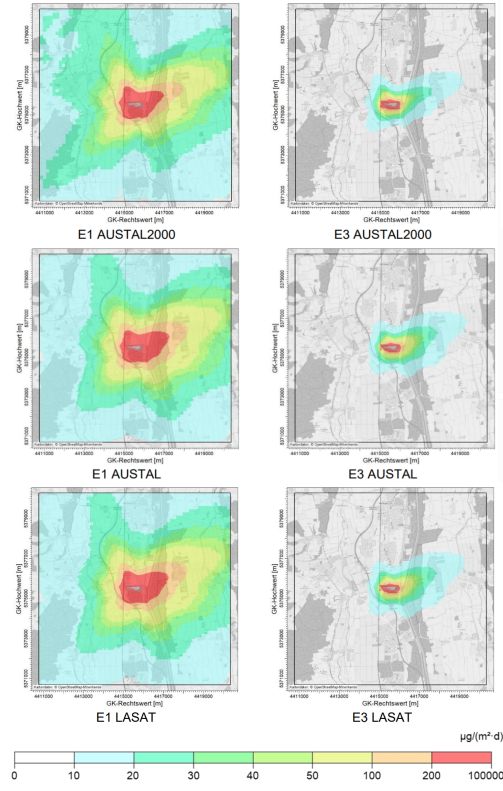In the current issue of the specialist journal ‘Gefahrstoffe, Reinhaltung der Luft’ (Hazardous Substances, Air Pollution Control) (Volume 85 (2025), issue 07-08, 165 – 174), our colleagues Michael Kortner and Kim Lea Gutermuth (both from the Frankfurt branch) and Leona Mayer and Markus Kihm (Lech-Stahlwerke Meitingen) compare dispersion calculations according to the old and new TA Luft (Technical Instructions on Air Quality Control) with measurement data.
Using the example of the company Lech-Stahlwerke in Meitingen, where an extensive deposition measurement network for dust and associated metals has been operated since 2007, a comparison was made between dispersion calculations according to the old and new TA Luft (without and with the additional implementation of droplet drift) and the measurement data. On this basis, we discuss whether the model results in accordance with the new Technical Instructions on Air Quality Control (TA Luft) are really ‘so off the mark’ as claimed by various parties, and examine in detail the reasons for the discrepancies both within and outside the model system. It appears that for the extremely conservative ‘typical approval scenario’ with the model systems of the new TA Luft (without (AUSTAL3.1) and with drift (LASAT3.5beta, AUSTAL 3.2) compared to the deposition measurement data the results are even more overestimated and thus further from reality than those obtained according to TA Luft 2002 (AUSTAL2000). However, taking into account realistically modelled emission data, the model system of the new TA Luft, especially when considering droplet drift, produces more realistic results than TA Luft 2002. The transmission processes and thus both the spatial distribution and the amounts of immissions are therefore described more realistically than before. However, this is countered by a licensing and assessment practice established during the period of validity of TA Luft 2002 which overestimates emissions to such an extent that the more realistic model system of the new TA Luft yields findings that are problematic for licensing, particularly for larger plants (such as the steelworks examined here).
Find out about our services and your contact persons in the field of “Immission Control – Air Pollution Control”.
